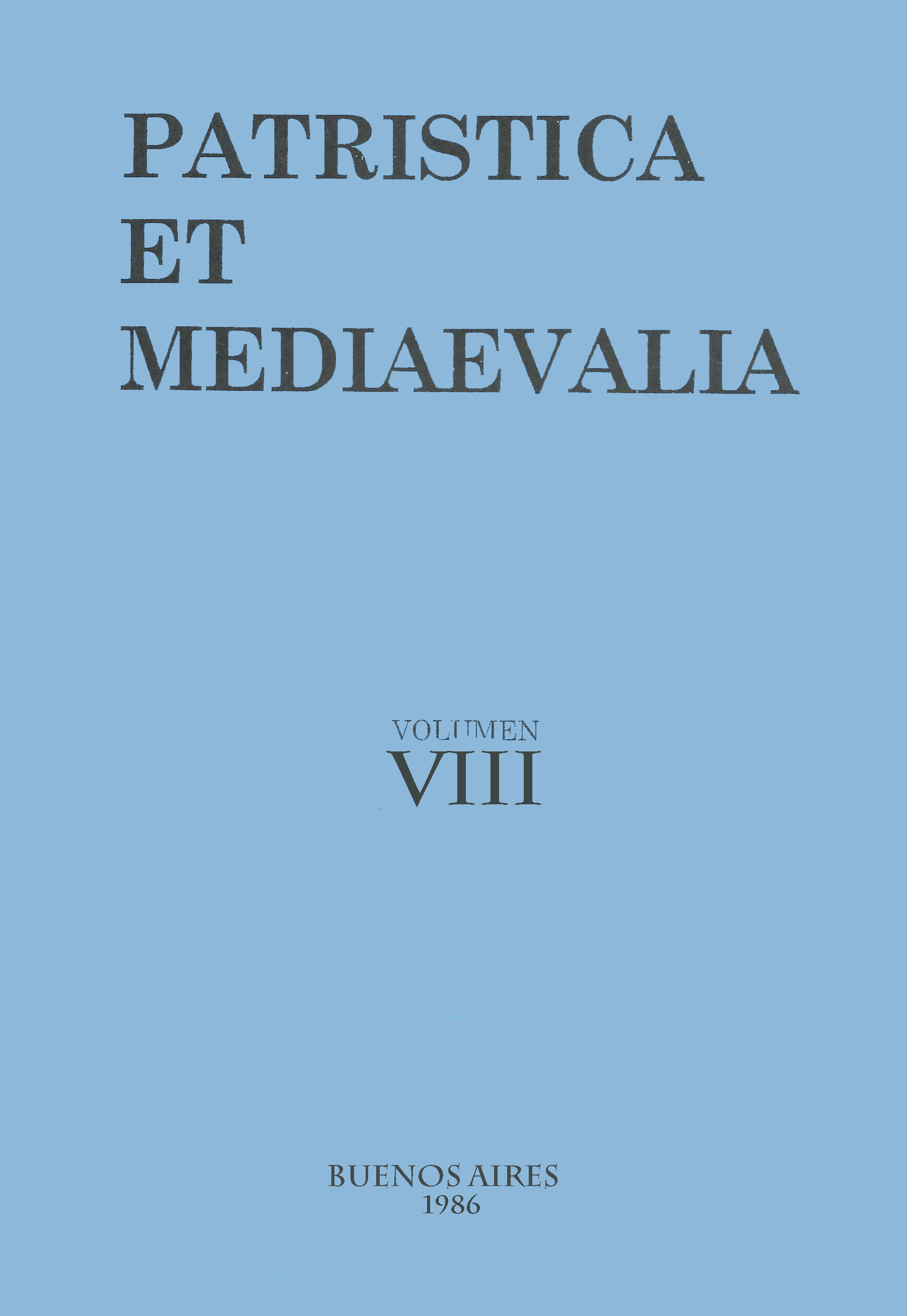El último Anselmo. Ensayo sobre la estructura del "De concordia"
Resumen
Este artículo pretende mostrar que el análisis del último trabajo de Anselmo de Canterbury, que es probablemente el más difícil de todos, finalmente está dando sus frutos. Gracias a un estudio detallado de su compleja estructura, nos permite destacar tanto la evolución de todo el itinerario intelectual de Anselmo así como su método de construcción de textos. Si mantiene, como en el De conceptu virginali..., el centro textual de la palabra escrita (Parte II sobre la predestinación), que da al conjunto una estructura sincrónica, así ordenada esta estructura está al servicio de un objeto de pensamiento que no coincide enteramente con el centro textual. La “concordia” de la gracia y el libre albedrío es aquí el verdadero centro objetivo del pensamiento anselmiano (III parte). Esto Anselmo hace en el De Concordia: por un lado, una duplicación del centro (textual y objetiva) que constituye su originalidad en el conjunto del “corpus”; por otra parte, una reflexión sobre la Nueva Alianza (la “concordia”), es decir, sobre el hombre como heredero del Espíritu de Cristo (vida teológica); y, por último, una conciencia plenamente madura del acto creador del teólogo, que da a su libro las huellas de un texto autobiográfico escrito al final de su vida (una vida teológica). De Concordia es, por lo tanto, en el pleno sentido de la palabra, la obra del último Anselmo.Descargas
1. Los/as autores/as que publiquen en esta revista aceptan las siguientes condiciones:
-
Conservan los derechos de autor/a y ceden a la revista el derecho de la primera publicación, con el trabajo registrado con Licencia Atribución-CompartirIgual 4.0 Internacional, que permite a terceros utilizar lo publicado siempre que mencionen la autoría del trabajo y a la primera publicación en esta revista.
-
Pueden realizar otros acuerdos contractuales independientes y adicionales para la distribución no exclusiva de la versión del artículo publicado en esta revista (p. ej., incluirlo en un repositorio institucional o publicarlo en un libro) siempre que indiquen claramente que el trabajo se publicó por primera vez en esta revista.
-
Tienen permitido y se les recomienda publicar su trabajo en Internet (por ejemplo en páginas institucionales o personales).
2. Condiciones de auto-archivo. Se permite y se anima a los/as autores/as a difundir electrónicas la versión post-print de sus obras ya que favorece su circulación y difusión y con ello un posible aumento en su citación y alcance entre la comunidad académica. Color RoMEO: azul.













